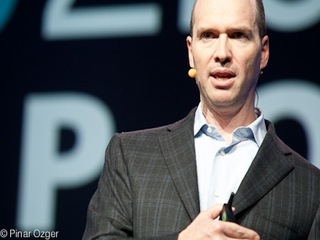DUOS expands AI capabilities to help seniors apply for assistance programs
It will complete and submit forms, and integrate with state benefit systems
Read more...
Making a more than 300-fold gain on an investment is huge, even in the inflation-happy world of technology and the partners over at Andreessen Horowitz are damn proud of their involvement -- no matter how small. A staggering $78 million is what Adreessen Horowitz stands to gain off an initial investment of $250,000 it made in Instagram just 25 months ago.
Ben Horowitz, one of the lead partners in the investment firm detailed the thought process that went into this early investment in a filter iPhone app that no one expected to be bought for $1 billion just two years down the road.
Last week, the New York Times claimed that the VC firm "fumbled" its investment in Instagram by also putting some money behind another photo-sharing app: PicPlz. But Horowitz proclaimed that the media outlet has a funny idea of what a fumble is, when his firm made out big in their modest funding.
"Ordinarily, when someone criticizes me for only making 312 times my money, I let the logic of their statement speak for itself," general partner Horowitz wrote in the blog. "The work that Kevin [Systrom -- Instagram's CEO] and team did will go down as legend in the industry and we thank them immensely."
You have to admit that it is a crazy benchmark when so many people in the tech world were admonishing Andreessen Horowitz for not putting down more money to begin with. Apparently that ridiculously successful return was just not enough for them. While some may have seen just what potential Instagram was -- with its hipster appeal, iPhone exclusivity and sharing potential -- let's not forget that the company really just added filters to photos that people put on Facebook and there were only a handful of people working on the project.
Bur Horowitz did the unnecessary and explained why his firm didn't throw down more money at the start.
"When we invested in Instagram, it wasn’t actually Instagram. It was a company called Burbn, and the idea was roughly to build a mobile micro blogging service. Technologically, it was also different: an HTML 5 application rather than a native app," Horowitz wrote. "As Kevin iterated on Burbn, we made another investment in an excellent entrepreneur, Dalton Caldwell. Dalton’s company, Mixed Media Labs, initially built a product called PicPlz. PicPlz aimed to be a mobile photo sharing service built on its own social graph. Furthermore, the graph would be public like Twitter rather than private like Facebook."
As both products matured, the VC firm had to pick a horse to back and the company decided to keep investing in Caldwell's PicPlz. "After speaking with both entrepreneurs and much internal discussion, we concluded that funding Kevin to compete with Dalton would be a violation of the original implicit commitment we made to Dalton—to not fund competitors to PicPlz. On the other hand, funding Dalton did not violate our implicit agreement with Kevin because he changed his business—we’d funded Burbn not Instagram," Horowitz clarified.
Since VC firms invest in a lot of companies while they are still in more malleable forms, it just so happens that some evolve into products similar to other investments -- that's just the nature of the business. So while Horowitz' group may have bet on staying with the less stratospheric business, they, by no means missed out on the Instagram marvel -- especially with what a great return that modest investment was.

Horowitz also pointed out that Instagram was a very unique case and the company is still very confident in the work that PicPlz and Caldwell have in store in coming months and years. Currently, Caldwell is working on a new service App.Net that offers a new mobile app distribution and monetization platform for iOS and Android. Essentially, App.net helps developers optimize their products' online presence and provides them tools to manage, monitor and promote their app with greater efficiency. Using App.net, developers can create state-of-the-art landing pages and customizable download widgets. App.net makes it easy to track interactions and other actionable performance data.
And I am fairly sure that Andreessen Horowitz is going to get through this debacle just fine, especially considering that fact that it is still working through the $1.5 billion it secured earlier this year for its future investments.
The firm now controls $2.7 billion in funding over the last three years it has been in existence. This means that in recent months, the firm has raised nearly $1.5 billion, one of the largest fundraisings in history.
Andreessen Horowitz has invested in companies in the seed-stages, like Cumulus Networks, to fast-growing enterprises like Airbnb, Box.net, Twitter, Digg, Zynga, Fab.com and BlueStacks.
Horowitz revealed that in 2011, the firm hosted over 600 portfolio presentations to corporate customers and partners at its office in Menlo Park. These presentations resulted in more than 3,000 introductions between portfolio companies and prospective Fortune 500/Global 2000 senior executives.
In December, the firm put $40 million of its confidence in the rapidly growing flash sales site Fab.com, that just continues to expand and show the strength of currated design pieces and fashion in the online e-commerce space.
Now the firm has relationships with over 4,000 engineers, designers and product managers and has resulted in 130 hires within the portfolio. And Andreessen Horowitz has added over 550 executives to its network in 2011 and made more than 300 executive introductions to portfolio companies.
It will complete and submit forms, and integrate with state benefit systems
Read more...The bill would require a report on how these industries use AI to valuate homes and underwrite loans
Read more...The artists wrote an open letter accusing OpenAI of misleading and using them
Read more...





